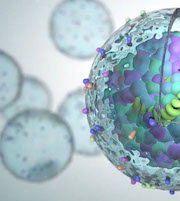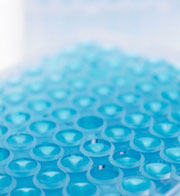A stroke occurs when blood flow leading to, or in, the brain is blocked (ischaemic stroke) or a blood vessel in the brain ruptures (haemorrhagic stroke), which can result in damage to the nerve cells in the brain and a loss of bodily functions. Stroke is the single largest cause of adult disability in the developed world. Over 150,000 people suffer a stroke each year in the UK, and approximately 800,000 in the US. The vast majority of these strokes are ischaemic in nature. ReNeuron’s CTX stem cell therapy candidate seeks initially to treat those patients who have suffered an ischaemic stroke and have been left disabled by it. These patients constitute approximately one half of stroke survivors.
The annual health and social costs of caring for disabled stroke patients is estimated to be in excess of £5 billion in the UK, with stroke patients occupying 25 per cent of long term hospital beds. In the US, the annual direct and indirect costs of stroke are estimated to be in excess of US$70 billion. The type of stroke treatment a patient should receive depends on the stage of disease. Generally there are three treatment stages of stroke:
- Prevention – treatments to prevent a first or recurrent stroke are based on treating associated risk factors, e.g. high cholesterol, smoking and diabetes;
- Treatment immediately after the stroke; acute-phase stroke treatments attempt to arrest a stroke whilst it is happening by dissolving the blood clot that has caused the infarct; and
- Post stroke rehabilitation – the aim of post stroke rehabilitation is to improve both functional and cognitive recovery in the patient some weeks or months after the stroke event.
It is this third treatment stage that the CTX stem cell therapy candidate seeks to address. A number of treatments exist or are in development to treat stroke patients in the acute phase. However, there are currently no therapies available for patients who have a stable and fixed neurological deficit following a stroke.
ReNeuron’s CTX stem cell therapy candidate for stroke disability consists of a neural stem cell line which has been generated using our proprietary cell expansion and cell selection technologies and then taken through a full manufacturing scale-up and quality-testing process. As such, CTX is a cryopreserved, clinical and commercial-grade cell therapy product capable of treating all eligible patients presenting.
CTX has been shown to be safe and well-tolerated in a first-in-man UK clinical trial (PISCES I) in eleven disabled stroke patients who were followed up for at least two years post-treatment. The data from this study were recently published in The Lancet (click here to view). Similarly, the CTX treatment was safe and well tolerated in PISCES II, a Phase 2a single arm, open label study in which a total of 23 patients living with significant disability resulting from ischaemic stroke were treated with CTX and followed out to 12 months post-treatment.
Response rates in key measures used to assess efficacy in PISCES II were observed at 3 months post-CTX treatment and were sustained out to 12 months post-treatment. Notably, a response rate of 35% of subjects at 12 months post-CTX treatment had at least a one point improvement on the modified Rankin Scale (mRS), a 7 point, clinician-reported global measure of disability and dependence upon others in carrying out activities of daily living. A one-point improvement in mRS is proven to be clinically meaningful for patients, both in terms of quality of life and healthcare resources needed to care for them.
Further, data analysis from a pre-specified subgroup of patients in PISCES II study, who had residual upper limb movement, showed an even higher response rate (ie >1 pt improvement) of 50% on the mRS at 12 months post-treatment. Subjects similar to this subgroup, with moderate or moderately severe disability (mRS 3 or 4) and some residual arm movement, was the target population for the Phase 2b clinical trial (PISCES III).
PISCES III, which has now been terminated, was designed as a randomised, placebo-controlled clinical trial in 130 subjects to be conducted in the US. The primary endpoint of the study was a comparison of the proportion of subjects in the CTX-treated and placebo arms showing a clinically meaningful improvement on the mRS at 6 months post-treatment. Recruitment in the US was initially suspended due to COVID-19 but following a strategic decision, was terminated once all patients already treated were followed up over time in line with the clinical trial protocol. The Company’s stroke disability programme with its CTX cell therapy candidate will continue through partnerships.
The Company has signed an exclusive licence agreement with Fosun Pharma for the development, manufacture and commercialisation of the CTX programme in the People’s Republic of China.
The Company’s CTX cell therapy candidate will be made available for licensing in stroke disability outside China. Positive data from the PISCES II Phase 2a clinical trial of CTX in stroke disability were recently published in the Journal of Neurology, Neurosurgery, and Psychiatry, available via the following link: http://jnnp.bmj.com/cgi/content/full/jnnp-2019-322515
The CTX cell therapy candidate will also be available for licensing in other indications such as Huntington’s disease, a progressive genetic brain disorder where recently published non-clinical data has demonstrated the potential of CTX cells to address the deficits associated with the disease. The data, published in the journal Stem Cells, are viewable at the following link: https://stemcellsjournals.onlinelibrary.wiley.com/doi/10.1002/stem.3191
For further information please refer to the clinical trials page.


